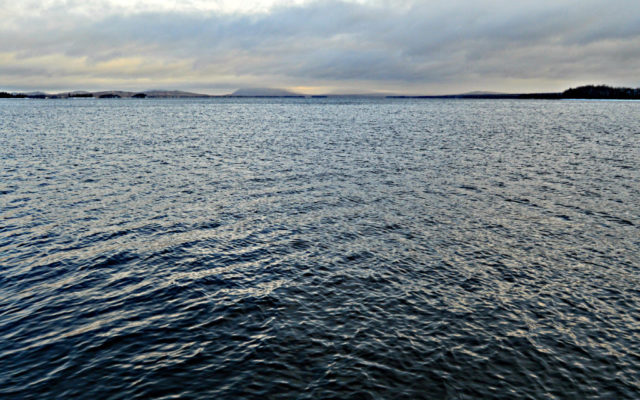
These are ice-out fishing hotspots
By Julie Harris, Bangor Daily News Staff
Finding the hotspots for fishing in your area is pretty simple right now, according to a state fisheries biologist.
You either pay attention to where the smelts are running or watch the state’s fish stocking report, said Scott Davis, Maine Department of Inland Fisheries and Wildlife fish biologist for Region B, Central Maine.
Most of Maine’s lakes and ponds in southern and central Maine are open water now, having experienced earlier than normal ice-outs. There may be remnants of ice in far northern Maine, but the area’s largest lake — Long Lake in St. Agatha — went out on April 23. Moosehead Lake’s ice went out on April 20.
“It’s been a good year for salmon fishing so far,” Davis said on April 26.
Open water fishing started on April 1. Some lakes and ponds, especially in southern Maine, are open to fishing year round. Others allow open water fishing but are closed to ice fishing.
Really open years weatherwise like this one in which there is less definition in the seasons make things more difficult, Davis said. There is more pressure on the hatcheries because people are ready for open water fishing and the season is extended on year-round waters because it started early.
All salmon on lakes and ponds in central Maine are stocked by the state, he said. The only wild population in this region is the main stem of the Kennebec River.
There also is more pressure on lakes and ponds that are closed to ice fishing for conservation purposes, often to protect native fisheries. They are hit by fishermen early when open water fishing is legal on April 1 whereas they might have more time under the ice in other years.
The state stocks some lakes and ponds with salmon and trout as a matter of routine. When they stock, and in what lakes and ponds, can be found at the department’s website.
The idea is to make sure there are some fish to catch off docks and shorelines so that people, especially children and those with disabilities, can be successful, and not get discouraged with the sport, Davis said.
Some people chase the hatchery truck for their fishing spots, he said.
“Those fish are meant for harvest,” Davis said.
If those cold-water fish, especially brook trout, aren’t caught in the spring, they likely will die when the bodies of water heat up with the summer, he said.
Specific areas where people can catch fish in central Maine right now include bass fishing in the bigger lakes pre-spawn, plus white perch in China Lake and others where that fish thrive. Also fishing is good at Echo Lake, Flying Pond and Lake St. George, Davis said. There are suckers and smallmouth bass in the outlet of China Lake.
The St. George River was just stocked, he said.
Cold brooks and streams where there are eddies, and above beaver dams that have been there no longer than five years are good places to find brook trout. Those ponds tend to be shaded, which keeps the water cold.
Old beaver ponds are too warm for cold-water fish like trout because the sediment that forms on the bottom holds the heat from the warm sun. There is less shade because the beavers have cut down the trees, he said.
Moosehead Lake region is booming right now, Davis said. Most of the smelts are done spawning at this point. Smelts and salmon are abundant at Moose River, he said.
A couple of the guide services on Moosehead bear out that information with their social media posts of fish being caught by clients. Reel Moosehead Guide Service said the fish have been consistently beautiful this spring.
Mooselookmeguntic Lake in Franklin and Oxford counties has so many fish that the Maine Department of Inland Fisheries and Wildlife really wants people to harvest some.
Many people catch and release fish now, which causes a problem in some waters like Mooselookmeguntic, Davis said. The fishermen think they are giving the fish a chance to get bigger.
But in some bodies of water, the fish just become overpopulated and there isn’t enough food for any of them to get big. So in lakes like Mooselookmeguntic, the salmon will be legal length but they will not be as plump as they should be.
On a body of water in Solon, 5-year-old fish are 14 inches long, but if they were managed correctly, would be 18-22 inches by that age, he said. The stocking program allows the state to control situations like that, whereas they can’t manage a natural fishery.
He said the state is evaluating its stocking program to make sure it is as effective as it can be.
Although early season fishing can be a lot of fun, Davis wanted to remind fishermen that the lakes and ponds are still really cold and to be sure to wear personal flotation devices. Brooks, rivers and streams are still high from the late winter and early spring rain storms.